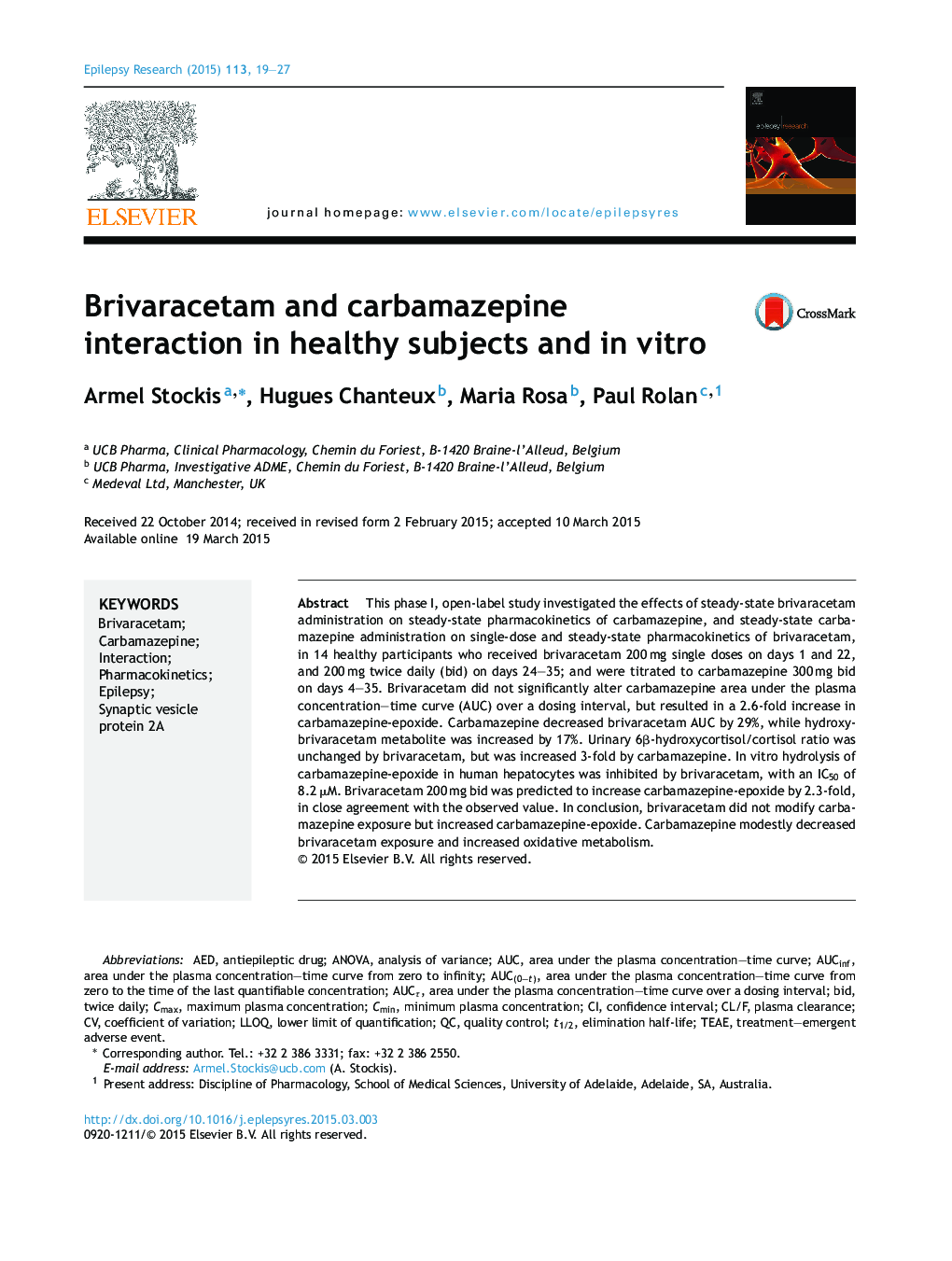| Article ID | Journal | Published Year | Pages | File Type |
|---|---|---|---|---|
| 6015398 | Epilepsy Research | 2015 | 9 Pages |
â¢Phase I interaction study (brivaracetam, carbamazepine) in 14 healthy subjects.â¢Brivaracetam did not significantly alter carbamazepine exposure.â¢Brivaracetam increased carbamazepine-epoxide exposure by 2.6-fold.â¢In vitro hydrolysis of carbamazepine-epoxide was inhibited by brivaracetam.â¢Enzyme induction by carbamazepine led to modest reduction in brivaracetam exposure.
This phase I, open-label study investigated the effects of steady-state brivaracetam administration on steady-state pharmacokinetics of carbamazepine, and steady-state carbamazepine administration on single-dose and steady-state pharmacokinetics of brivaracetam, in 14 healthy participants who received brivaracetam 200 mg single doses on days 1 and 22, and 200 mg twice daily (bid) on days 24-35; and were titrated to carbamazepine 300 mg bid on days 4-35. Brivaracetam did not significantly alter carbamazepine area under the plasma concentration-time curve (AUC) over a dosing interval, but resulted in a 2.6-fold increase in carbamazepine-epoxide. Carbamazepine decreased brivaracetam AUC by 29%, while hydroxy-brivaracetam metabolite was increased by 17%. Urinary 6β-hydroxycortisol/cortisol ratio was unchanged by brivaracetam, but was increased 3-fold by carbamazepine. In vitro hydrolysis of carbamazepine-epoxide in human hepatocytes was inhibited by brivaracetam, with an IC50 of 8.2 μM. Brivaracetam 200 mg bid was predicted to increase carbamazepine-epoxide by 2.3-fold, in close agreement with the observed value. In conclusion, brivaracetam did not modify carbamazepine exposure but increased carbamazepine-epoxide. Carbamazepine modestly decreased brivaracetam exposure and increased oxidative metabolism.
